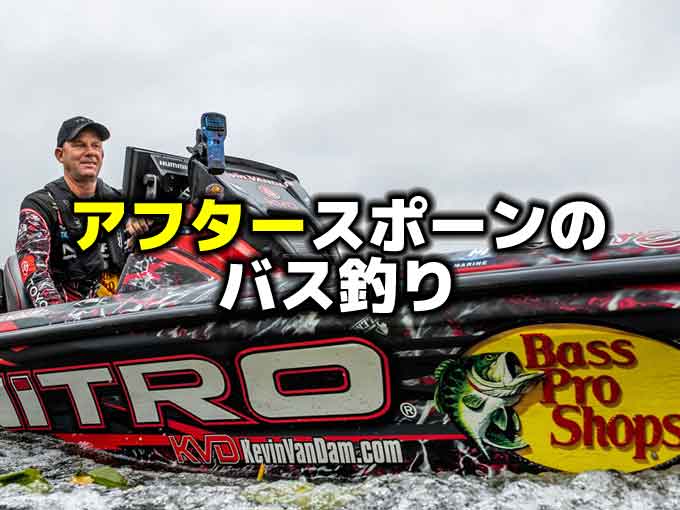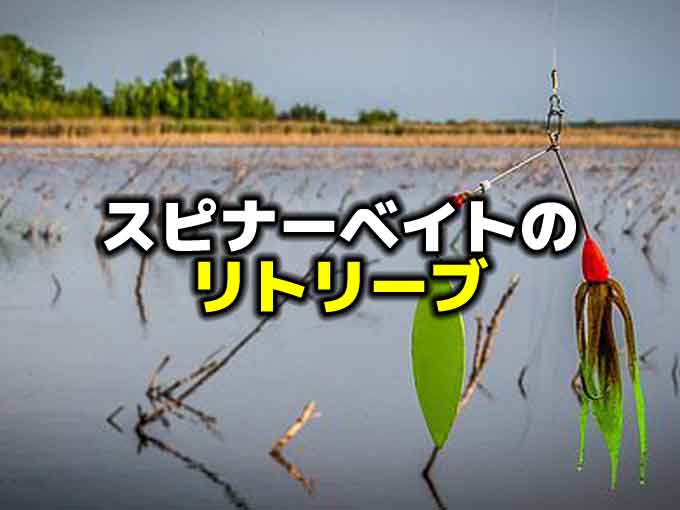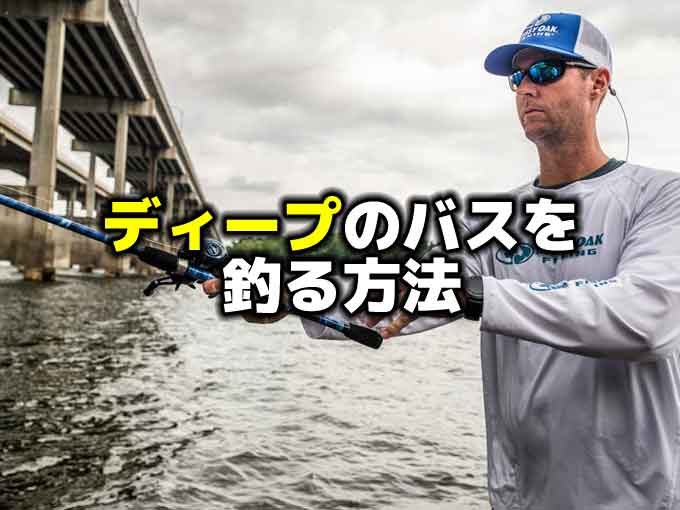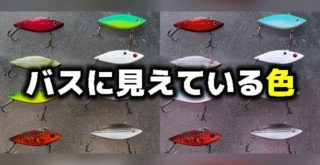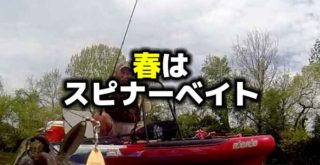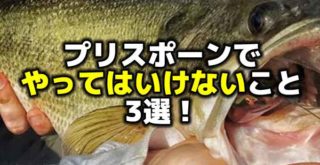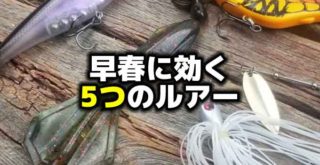究極のシューティング、ダミキリグとは?①(全2回)

Photo by flwfishing.com
こんにちは!店長の小山です!
本日は海外サイトより、”FISHING THE DAMIKI RIG IN WINTER”という記事を引用してご紹介いたします!
引用先:flwfishing.com”FISHING THE DAMIKI RIG IN WINTER”February 8, 2017 by Curtis Niedermier(海外サイトです)
皆さんは「シューティング」という釣り方をご存知でしょうか?
魚探を見ながら、ベイトとバスが映った時にその方向へすかさずリグを投げ入れ、魚探に映ったであろうバスを直接釣ってしまうというもの。
サイトフィッシングとは違って、ある程度ディープレンジでの釣りになりますので、見えバスを釣るよりは魚の警戒心が弱いため、うまくすればすぐに釣れるという、まさに文明の利器を駆使したハイテクフィッシングなのです。
そして今のところ、今回ご紹介するこのダミキリグのシューティングの釣りが一番の究極と言える気がします。
魚探の仕組みや理屈がわかっていないと、どっちへ投げたらいいかすらわからないものですから、釣り自体がある程度経験のある方向きの釣り方かもしれません。また、この記事ではローランス魚探を例にしておりますので、魚探の専門用語がでてきますので、魚探をお持ちでない方には文面自体が理解しづらいかもしれませんし、割りと最近発売された機種でしか実現できないことかもしれませんので、万人向けの記事ではないかもしれませんが、こういうハイテク機器はいずれ値段も下がり、一般的になっていくもの。
来たるべき日のために予習をし、イメージしておくことはいいことだと思いますし、シューティングの釣りに興味がある、マスターしたい、という方にもぜひ読んでみてほしいと思います。
少し長いので2回にわたります。今回は1回目です。
ダミキリグでのシューティングゲームのあらまし
The two lines careen toward each other on the Lowrance screen. The top line, representing Derrick Snavely’s bait sinking into the waters of South Holston Lake, slopes down from left to right. The other, generated by a predatory smallmouth torpedoing up from the depths, is a mirror image.
Just before “impact,” Snavely flips the bail closed on his spinning reel and then pauses. His bait is completely still. On the screen, the two lines level out parallel to each other for a few seconds, as the entire scenario is put on pause while the bass debates whether or not Snavely’s subtle jighead-minnow combo, known in these parts as a “Damiki rig,” is as good to eat as it looks.
The former FLW Tour pro and 2017 T-H Marine FLW Bass Fishing League All-American qualifier has seen such a scenario play out on his depth finder many times before. “Video game fishing” with a Damiki rig combo has become a go-to technique in the clear mountain reservoirs of the Appalachians during the last few seasons, and it works especially well on the coldest days – days like this one, with the temperature in the 20s and fresh snow on the slopes. Snavely fishes through the winter every season, so he’s dialed in on the technique and knows how to read a fish’s intentions just by what he sees on the depth finder.
With this fish, he waits, his finger on the line so he can feel for even the subtlest take. It’s too much for this bass to ignore, and the two lines converge on the screen into one thick band. A long second passes before Snavely snaps the rod up with a quick, firm hookset.
He races with the reel to take up line as the fish fights toward the surface. It quickly shows itself: an angry 3-pounder. When the fish sees the boat, it makes a late surge that pulls drag. Snavely’s rod doubles over, but he plays down the fish, giving it some time to tire. When the fish nears the surface again, the angler sprawls across the deck of his Ranger. Switching the rod to his right hand, he grabs the line with his left and gently pulls the bass up to the surface. Then Snavely drops the rod and lips the bass into the boat.
He grins as he shows off the chunky smallie, knowing that he just outsmarted an apex predator in the cat-and-mouse game that is Damiki fishing, a dynamite technique that has applications throughout much of the country where smallmouths live.
二本の線が、ローランス魚探の画面上で近付こうとしている。デリック・スナヴェリー(FLWツアープロ)のルアーがサウス・ホルストンレイクの水中にフォールしていく様が、左から右に向かって斜めに落ちていく線。もうひとつは、捕食者であるスモールマウスバスが今まさにそれを襲うとしている線で、それが画像に反映されています。
「その線がぶつかる」直前に、スピニングリールのベイルを返し、一時停止させます。ルアーは完全に静止しています。スクリーン上では、2つが一時停止しているので、2つの線は画面上で数秒間平行になります。バスは「ダミキリグ」として知られている、見た目が食べているエサのと同じくらい魅力的なこのジグヘッドとワームのコンビネーションを食べようか迷っています。」
前のFLWツアープロと2017年のT-HマリンFLWバスフィッシングリーグオールアメリカンの予選では、このようなシューティングゲームのシナリオが何度もプレーされています。ダミキリグでの「テレビゲームフィッシング」は、過去数シーズンのアパラチア山脈のクリアリザーバーで最高のテクニックとなっています。この時期のような寒い日には特にうまくいきます。 気温マイナス6℃に山の斜面には新雪、こんな日にです。スナヴェリーは毎シーズン冬の間に釣りをすることができるので、魚探で見るだけで魚の意図を読み取る方法を知るテクニックを打ち立てました。
この釣りでは、彼はラインに指をかけて待っているので、かなり微妙なバイトさえ感じることができます。バスはずっと無視していますが、やがて2本のラインは画面上で1つになります。数秒もしないうちに、スナヴェリーはロッドを素早く振り上げ、しっかりしたフックセットをします。
彼は魚と水面に向かってレースでもするかのようなファイトをしました。そしてそれはすぐに姿を現します。怒った3パウンダー(1.3キロのスモールマウス)。魚がボートに気付くや、さらに怒りを増し、ドラグを出す。スナヴェリーのロッドは曲がりますが、魚を軽くいなし、疲れるまでの時間を与えます。魚が再び水面に近づくと、レンジャーボートのデッキに寝ころび、ロッドを右手に持ち替えて、左手でラインをつかみ、バスを水面まで静かに引き上げます。それから、スナヴェリーはロッドを置き、バスをボートの中に引き揚げました。
彼が太いスモールと笑顔を見せたのは、スモールマウスバスが生息する多くの場所で起用される爆発的テクニックのダミキフィッシング「イタチごっこ」において、彼がそのスモールマウスバスの裏をかいたということを知ったからです。
ダミキリグ
The Damiki rig looks to be nothing more than a 3- to 3 1/2-inch minnow-shaped soft plastic rigged on a light jighead, but the details are more complex.
It gets its name from the Damiki Armor Shad, which is a split-tail “fluke-style” bait with a broad “body” up front and a narrow rear end. The Armor Shad (shown at the bottom of the soft plastics photo below) is the original bait used for the technique and is often paired with what locals call an Erie-style jighead (below, far right), which has a 90-degree line tie, a pointed nose and most of the weight molded to the underside of the hook.
Using the proper jighead is important because it needs to balance with the bait in a way that allows the combo to come to rest horizontally in the water. This way the rig mimics a suspended baitfish that’s been stunned by cold water – an easy meal for a smallmouth bass.
Snavely and others have expanded on the original combo, and now local makers are pouring new jigheads and plastics that provide anglers more options.
He relies primarily on a 3/8- or 1/2-ounce Stoney Creek Tackle Minnow-E-Jig Head (above, left and center) and usually either the FoolinBass Custom Baits D-Shad (below, second from the top) or FoolinBass Custom Baits Foolin’ Shad (below, third from the top). The jighead has a 3-D eye and a triangular-shaped head with a wire bait keeper. The baits have parallel ridges molded into their sides, and Snavely cuts off the tip of his bait at the first ridge for a better fit against the back of the jighead. When combined, the jighead and plastic fit together perfectly and look just like a small minnow. Also, Snavely suggests sliding the knot to the backside of the jig’s line tie. This helps keep it horizontal in the water.
Other baits can work for the technique, including the Yamamoto Shad Shape Worm (above, top) and just about any small, soft jerkbait or minnow-shaped drop-shot bait. In warmer conditions, variations of the Damiki rig have some applications in offshore fishing, and larger combos might come into play when bass are more aggressive. In winter, though, it’s primarily a small-bait affair.
For clear-water smallmouths, productive colors range from natural shad patterns, which are quite popular, to shades of green. Determining the best color each day requires experimentation, though Snavely recommends starting with silver flash (translucent grey with silver flakes) or white on cloudy days.
ダミキリグは、軽いジグヘッドに取り付けられた3〜3.5インチのミノー形状のワームに過ぎませんが、細かくいうともっと複雑なものです。
ダミキ・アーマーシャッドから名づけられていて、幅広いボディと後部の幅の狭いスプリットテールのフルーク系ワームです。下の写真のいちばん下がアーマーシャッドで、このテクニックに使われたオリジナルのワームです。地元の人々がエリースタイルのジグヘッド(下写真いちばん右)と呼ばれるものとペアになっています。90度のラインアイ、尖った先端、フックの下側に大部分の重心がくるウエイトで形成されています。

Photo by flwfishing.com
リグが水中で水平になるようワームとのバランスをとるため、適切なジグヘッドを使用することは重要です。このように、このリグは水温低下によりサスペンドするベイトフィッシュを模倣します。これはスモールマウスバスにとって楽に摂れる獲物ですから。
スナヴェリーたちがこの組み合わせを広めたことで、現在地元のメーカーは新しいジグヘッドやワームを開発し、釣り人にもっと多くのオプションを提供しています。
彼は主に3/8または1/2オンスのストーニークリークタックルミノーEジグヘッド(上のジグヘッドの左と中央)を使用し、通常はフーリンバスカスタムベイツの D-Shad(写真上から2番目)またはフーリンバスカスタムベイツ Foolin 'Shad(写真上から3番目)。このジグヘッドは3Dアイと、ワイヤー・ベイト・キーパーを備えた三角形のヘッドをもちます。それらのワームはサイドがシュッとしていて、さらにジグヘッドに合うようにワームの頭部を少し切り落としますので、ジグヘッドとワームを組み合わせると、完璧にフィットし、小魚のように見えます。また、スナヴェリーは、結び目をジグのラインアイの裏側に持ってくることを提案しています。これも水中で水平に保つのに役立ちます。
ゲーリーヤマモト・シャッド・シェイプ・ワーム(いちばん上)や、小さなソフトジャークベイトやミノーの形をしたダウンショット系ワームなど、他のワームでもこのテクニックで使うことができます。より暖かい状況では、ダミキリグのバリエーションとして、オフショアでバスがより積極的なときに大きなワームで応用されるかもしれません。しかし、冬には主に小さなワームがいいでしょう。
クリアウォーターのスモールマウスバスのために有効な色は、ナチュラルシャッドからグリーン系にまで人気が及びます。その日の最良の色を決定するには試してみないとわかりませんが、曇った日にはシルバーフラッシュ(ゴースト/シルバーフレーク)またはホワイトから始めることをおすすめします。
推奨タックル

Photo by flwfishing.com
Damiki fishing is a finesse technique, so spinning tackle gets the call. Snavely recommends a high-quality drop-shot rod. His preference is a 6-foot, 10-inch G. Loomis NRX 822S DSR, though he’s been experimenting with a rod that’s a bit longer, too.
He pairs the rod with a Shimano Stradic Ci4+, 10-pound-test braid and a leader of Gamma Touch fluorocarbon in 5- to 7-pound test. When the temperature is low enough that the braid is freezing on the spool and not flowing smoothly through the guides, he’ll spray a line conditioner on the spool or perhaps switch to a full spool of 4-pound-test monofilament. The downside of mono in deep water is that it’s not as sensitive as braid, and the stretch in the line makes a good hookset more difficult to achieve. Braid is definitely the line of choice.
ダミキフィッシングはフィネステクニックのため、スピニングタックルをおすすめします。高品質のドロップショットロッドを推奨します。彼の好みは6フィート10インチG.ルーミスNRX 822S DSRですが、少し長めのロッドも試しています。
彼はシマノ・ストラディック Ci4 +、10ポンドPEとガンマタッチフロロカーボンのリーダーの5から7ポンドの組み合わせを使用します。PEがスプール上で凍結しガイドをスムーズに通らないくらい温度が低いとき、彼はスプールにラインコンディショナーをスプレーするか、4ポンドナイロンが巻かれたスプールに切り替えます。ディープでのナイロンラインの欠点は、PEのように敏感ではないということであり、ラインの伸びもあり合わせの力が伝わらないということがあります。PEは間違いなくいいラインのチョイスです。
いかがでしょうか。
ダミキリグのあらましの部分を読んでいると、魚探に映るバスとルアーを見ながらの釣りで、まさにテレビゲーム感覚であることがわかります。
でも実際は水中で現実に起きていることですので、バイトした時は気持ちよさそうです。まさに「釣れたではなく釣った」という気持ちでしょうか。
今回はあらましからタックルの解説などでイメージをしていただいたところです。次回はいつどこで使うのか、その使い方について書いていこうと思います。
それでは、また。
毎度ありがとうございます!







